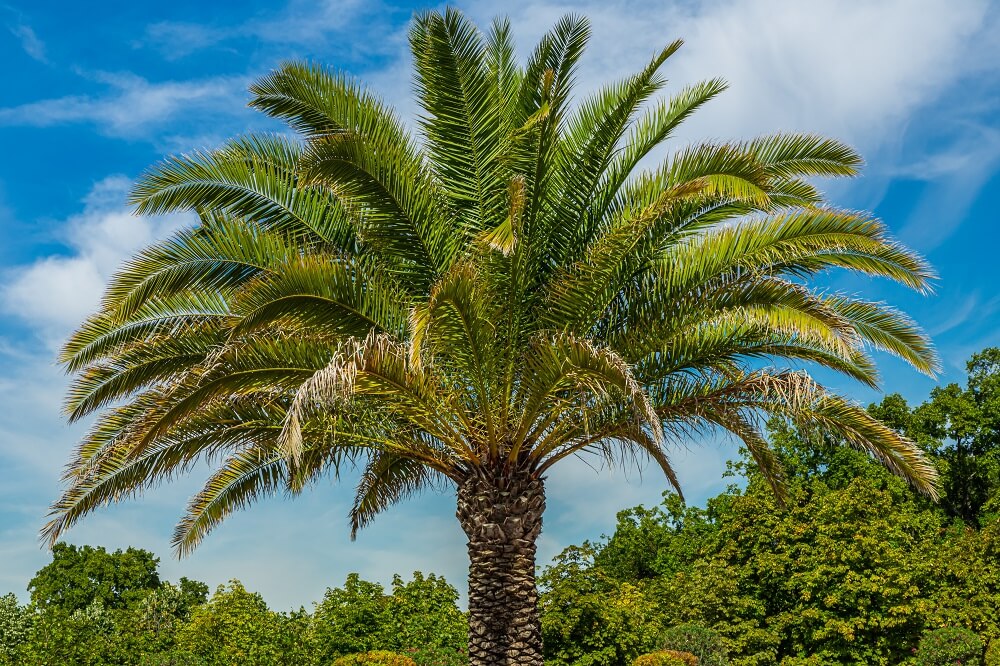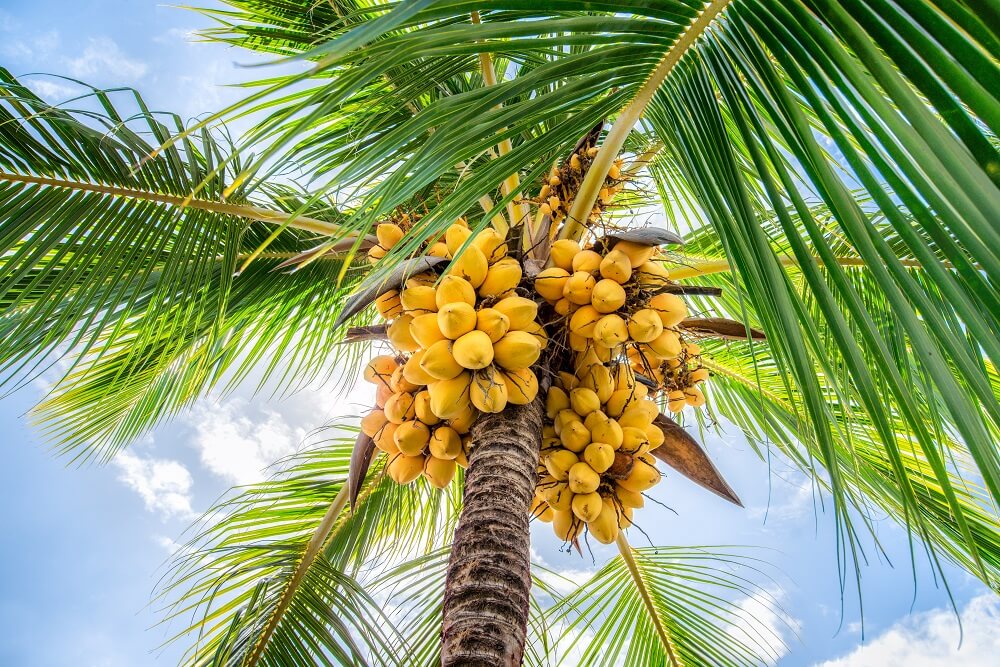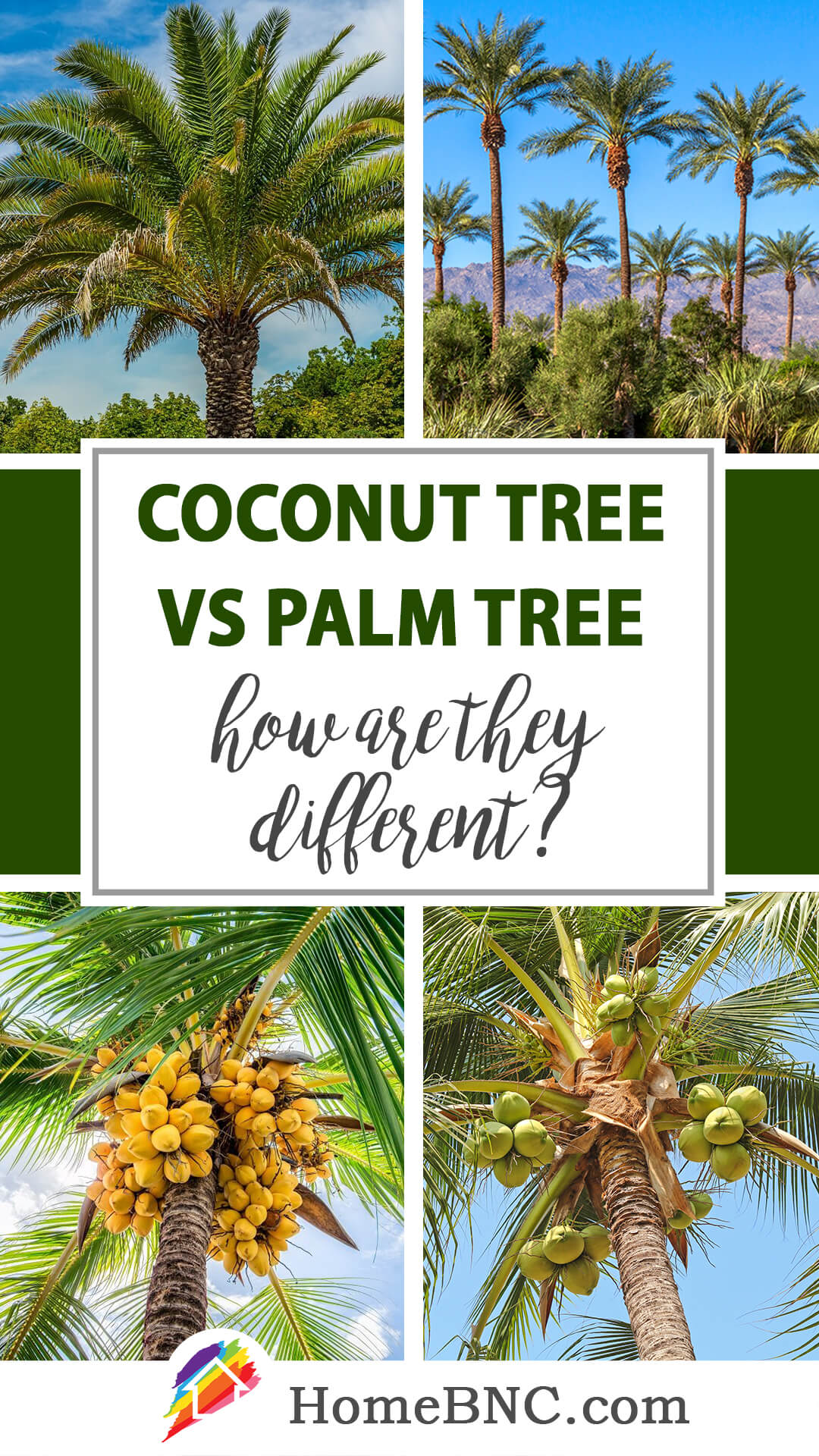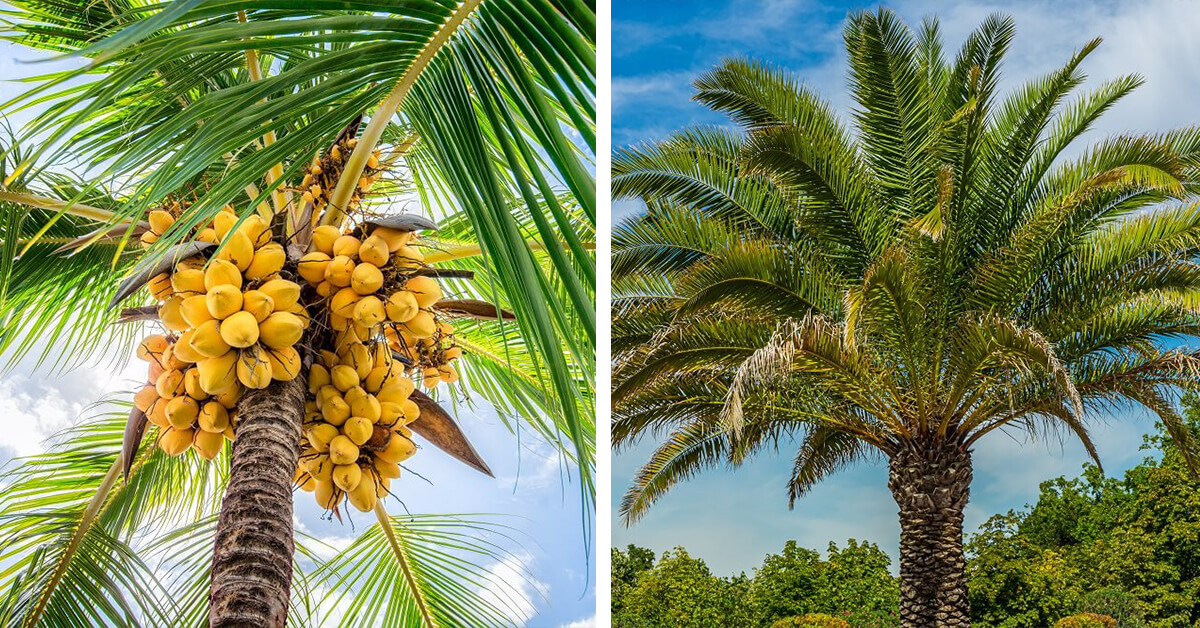There are few foods as widely eaten and simultaneously as mysterious as the coconut. Almost everybody knows what they look like, what they taste like, and even where they come from — but because they only grow in the warmest tropical regions, few of us have ever actually seen one in its natural habitat. Sure, they come from trees — but which ones? Coconut trees? Or palm trees? And come to think of it, is there even a difference?
If you’ve ever wondered what the difference is between a palm tree and a coconut tree, you can rest easy: your journey of discovery ends here. Below, you’ll find the answer to every question you’ve ever had about palms and coconuts but were too afraid to ask. If you’re impatient, all you need to know is this: all coconuts come from palms, but not all palm trees produce coconuts. Then again, if you’re the type of person who likes a side of context with their information — or just the type of person who really likes palm trees — you’ll want to read on. You may never look at a coconut the same way again!
Key Takeaways
- A palm tree is any large plant in the palm family, Arecaceae.
- There are over 2,000 species of palm, but they all have a few things in common:
- They are monocots, meaning they are more closely related to grasses than they are to trees.
- They have large, compound leaves that live for many years.
- All their growth is in one direction: up. Their trunks don’t have tree rings, and they never produce branches or roots.
- A coconut tree is a species of palm: Cocos nucifera.
- All coconut trees are palms – but not all palms are coconut trees. Only one species produces coconuts.
- Coconut trees are native to southeast Asia, but have been introduced to tropical regions worldwide.
- Coconuts are the fruits of the coconut tree, and the edible part of the coconut is the interior of the seed.
- Although coconuts are popular ornamentals, they often aren’t allowed to produce fruit because of the dangers of falling coconuts.
- If you see a palm tree that doesn’t produce coconuts, it might be a similar species – like the queen palm or forest coconut – or it might have had its fruit removed to reduce the risk of damage or injury from falling coconuts.
- If you find a coconut in the wild, you can eat it – but make sure it’s not spoiled or cracked before you do!
Coconut Tree vs Palm Tree: Similarities and Differences
1. What is a palm tree?

All palms belong to the family Arecaceae, a large and extremely diverse family of plants that comprises well over 2,500 individual species. Technically, they aren’t trees at all, and are more closely related to grasses and yuccas than they are to oaks and maples. “Palm tree” simply refers to a tree-sized palm — but besides height, palms are not very tree-like.
For one thing, they don’t produce true wood: like bamboo, their “wood” is really just pieces from their very thick stems. Which means they don’t have tree rings — which in turn means that their trunks never get any wider. They also don’t have branches, and grow only from a single point, the top of the stem, where the leaves attach. Young palms look squat compared to adults because they are the same width, but only a fraction of the height. It also explains why even the very tallest palm trees look so spindly compared to conifers or hardwoods of similar height.
On the other hand, you may have noticed that despite their somewhat precarious appearance, palm trees are amazingly stable, and aren’t uprooted even by hurricane-force winds. This is even more remarkable when you consider that palm trees, because they don’t undergo secondary growth (the thickening or widening of existing growth), don’t even have true roots. Instead, they’re supported by a huge mat of shallow adventitious roots that sprout directly from the stem.
This kind of root system is much more flexible, and in the end more stable, than the relatively deep and thick root systems of true trees. This is part of the reason why palm trees are so rarely knocked down by high wind. (Another reason is that the trunks of palm trees are alive and active, even in the very center, and therefore more flexible than the hard, brittle heartwood of trees.)
2. What is a coconut tree?

There are over 2,500 species of palms in the world, but only one produces coconuts: Cocos nucifera, the coconut palm or coconut tree. It is the only species in its genus, and is most closely related to oil palms, which produce similar (but much smaller) fruits.
The fruit of the coconut palm, despite the name, is not really a nut but a drupe – something like a very large peach. The part of the coconut that you actually eat – the endocarp – is actually the inside of the seed, analogous to the peach pit. The mesocarp, which in a peach or cherry would make up the flesh, is a thick, inedible mass of fibers that protect the seed from the elements and make it buoyant. Coconuts are designed to be dispersed by water, and remain viable even after traveling thousands of miles on the open ocean.)
The word “coconut” comes from the Portuguese word coco, which means “head,” and refers to the appearance of a de-husked coconut to a human face. You’ve probably seen this “face” if you’ve ever cracked open a coconut yourself: three small divots at one end of the seed. These divots are pores where the coconut seedling eventually emerges – and the coconut meat and water are the material the seedlings subsist on while they mature. They are produced inside the seed as it ripens – which in coconuts is a much longer process than in most fruits, taking anywhere from nine months to a year.
3. How are they similar?
In appearance, coconut palms are quintessential palm trees: imagine a palm tree in your head, and it probably looks a lot like a coconut palm. This is probably due to the fact that coconuts are so widely cultivated, and have imprinted themselves on our cultural awareness.
In appearance, coconuts are quite typical of palm trees: they have smooth, unbranched stems; compound, evergreen leaves that sprout from the tip of the stem; and a spreading, fibrous root system that stabilizes the plants against erosion and wind damage.
4. How are they different?
In general, coconut palms differ from other palm trees in a few significant ways. First, their leaves are feather-shaped as opposed to fan-shaped, as in sabal palms (Sabal) and palmyra palms (Borassus). Second, the leaves fall cleanly from the trunks of coconut palms, leaving the trunk smooth beneath; the trunks of many other common species are roughened by scars from where old leaves were attached.
Finally (and maybe most obviously), there’s the fruit itself! While many species of palm trees produce edible fruits – including date palms (Phoenix dactylifera) and açai palms (Euterpe oleracea) – none are anywhere near as large as coconuts. (Well, almost none: a rare species of palm called the coco de mer produces fruits that are actually larger than the coconut, and have the largest seeds of any plant on Earth. You’re not likely ever to see one, and if you did, you probably wouldn’t mistake it for a coconut.)




